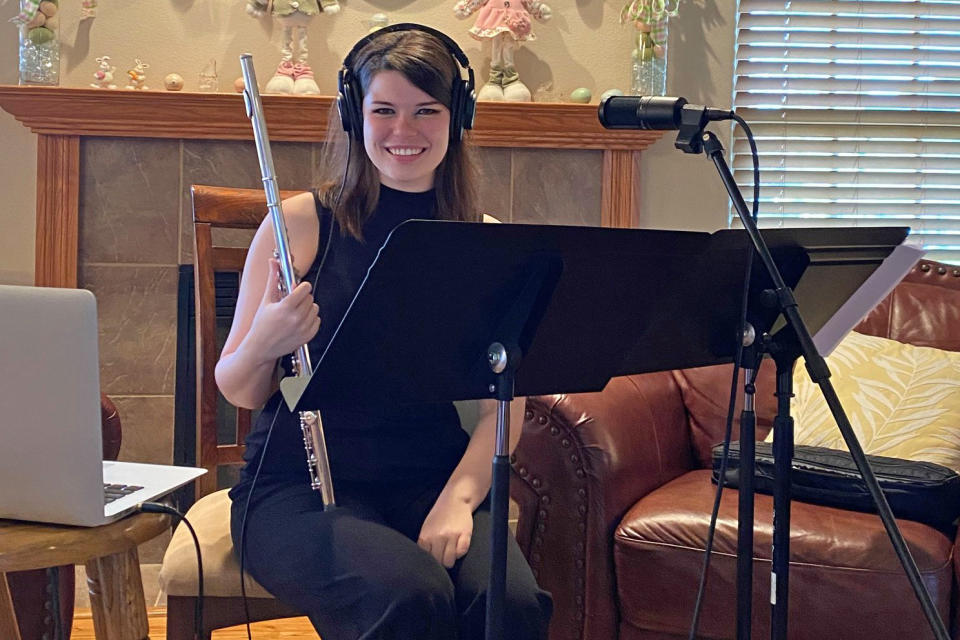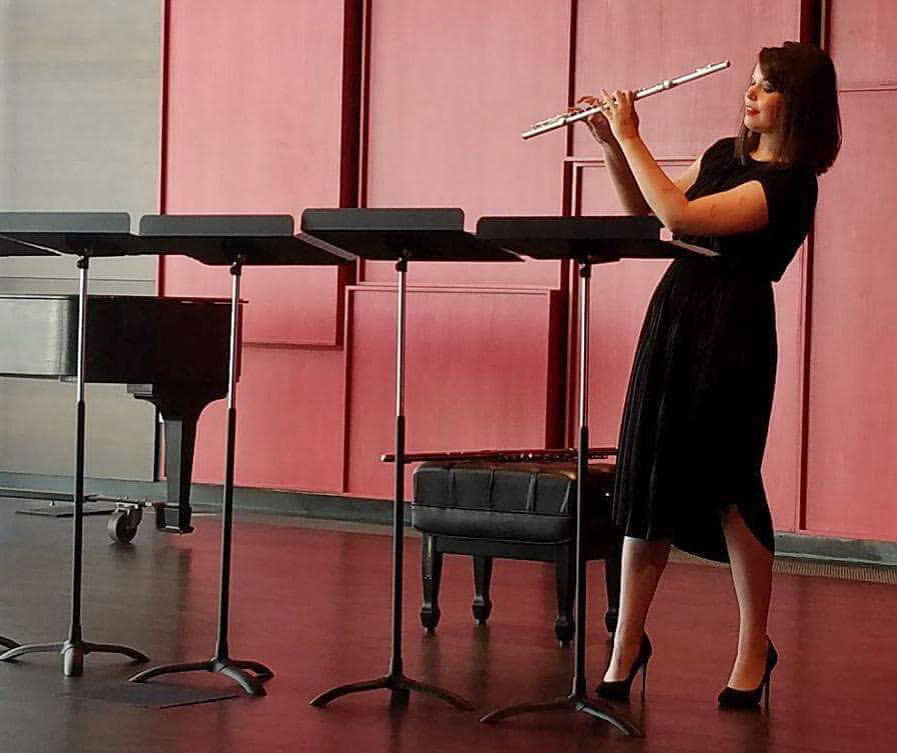To treat musicians' injuries, one therapist takes note from pro athletes
In Emily Duncan’s hands, playing the flute looks like one very cool job. At 28, Duncan, a New Yorker and Juilliard graduate, has taken her career around the world and across musical genres — performing in classical concert halls and off-Broadway folk musicals, even touring with a symphony orchestra that played only David Bowie songs. A lifelong musician, Duncan was living her dream until a simple injury, which she now knows could have been prevented, nearly ended it all.
One of Duncan’s hands had stopped working. Her symptoms started as occasional tingling in her fingers and slowly progressed to frequent pain and numbness throughout her hand. The impact on her ability to play — and her emotional well-being — was profound.
“It was pretty devastating,” Duncan said. “For me, being a musician is not just a job, but also a vocation, and a way of life.”
For the next four years, Duncan kept her injury a secret from her fellow musicians as she endured countless doctor’s visits, physical therapy appointments, nerve tests and painful steroid injections. Even so, no one could give her a definitive diagnosis or offer her safe, long-term pain relief. One other option was surgery, but she was terrified it might permanently damage the nerves in her hand and her ability to play music.

In pain, emotionally distraught with her career on hold, Duncan reached out to an occupational therapist at the Hospital for Special Surgery in New York City, who was researching an unusual protocol for treating injured musicians: She treated them like professional athletes.
Aviva Wolff had pioneered an innovative approach to treating sore hands and arms. She used advanced motion analysis and technology more commonly employed in professional sports or for movement disorders like Parkinson’s disease.
When Wolff, who trained as a hand therapist, first saw the equipment in her lab at HSS, she recognized its untapped potential. “I mean, no offense to the feet, but there are only so many things you do with your legs like walking, kicking, dancing. But our hands and arms? We do hundreds and hundreds of different things.” Wolff began to research the biomechanics of the upper body.
According to some estimates, as many as 90% of professional musicians suffer from an overuse injury because of improper form or bad posture. Wolff said it’s also a big problem among amateurs, especially those who are self-taught.
New York City proved to be Wolff’s mecca for studying professional musicians with upper extremity pain — particularly violinists, violists, pianists, keyboard players and guitarists. The most common of these injuries include carpal tunnel syndrome, tendonitis, or bursitis of the shoulder or elbows.
In her lab, Wolff attaches motion sensors to each musician and analyzes the biomechanics of their playing with multiple cameras, an approach akin to what athletic trainers and conditioning coaches do with professional athletes to tweak a golf swing, a basketball jump shot or pitching form. With the musicians, most of their pain is chronic and the high-tech motion analysis allows Wolff to detect abnormal hand or body placements that are exacerbating their injuries.
While similar in some ways, musicians’ and athletes’ bodies do differ in one key aspect of their performance. “Unlike athletes, musicians have to play without tension,” Wolff said. “With professional musicians who are using their body optimally, you can see how light they look. It seems effortless, and that’s what you want to see.”
Tomo Fujita, a professional guitarist and associate professor at Berklee College of Music in Boston, said that another distinction between injuries in the sports and music worlds surrounds their cultures of injury.
Athletes talk openly about their injuries and treatments, but it’s a different reality for musical artists, especially classical players, like Duncan.
“If you say you have pain, it could mean to some that you have a weakness,” Fujita said. ”It’s almost as if you’re saying you’re not as great a musician.”
Fujita acknowledged that music schools and educators, unlike sports coaches, spend little time teaching specific ways to prevent injury. He said that he’d love to see somebody consistently teach that if you play an instrument a certain way, you may wind up hurt.

“It needs to be emphasized more and not just something that you may receive a newsletter every three months about.”
Wolff is currently developing an injury prevention and treatment curriculum for conservatories and orchestras that includes anatomy lessons, stretches and exercises designed for each instrument. She’s also educating her medical colleagues with research from the motion analysis lab that shows specific ways to get injured musicians back to playing in the short-term and in better shape for the long-term.
“We are not educated enough in the demands of musicians,” she said. “The musculoskeletal system and our bodies are healing machines. There are solutions out there.”
As she does for all of her patients, Wolff created a customized “return to play” plan for Duncan, using the data she captured through her motion analysis studies.
One surprise: Though Duncan felt pain and numbness in her hand, Wolff pinpointed exercises for an area no one else had detected as a possible source of the pain — the upper back muscles.
“It was really illuminating for her to say, ‘You’re feeling the symptoms here in your hands and your wrist but actually if you strengthen these muscles in the back, that will help your symptoms,” Duncan said.
Now Duncan feels secure about her future and her ability to continue to do what she loves best, in the place she loves best.
“Slowly but surely as New York is coming back, I’m coming back,” she said. “It’s nice to be able to play music again.”
Follow NBC HEALTH on Twitter & Facebook.

